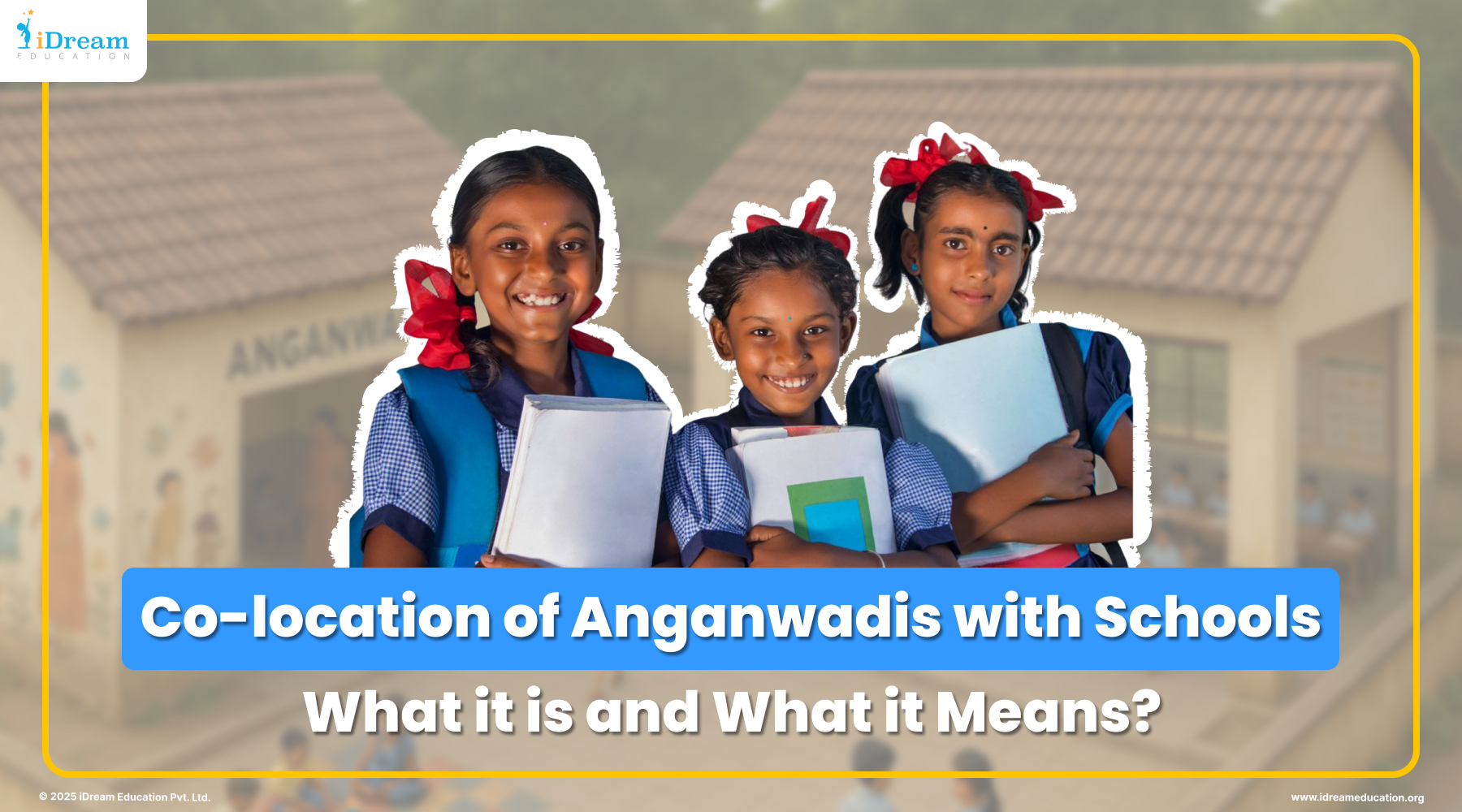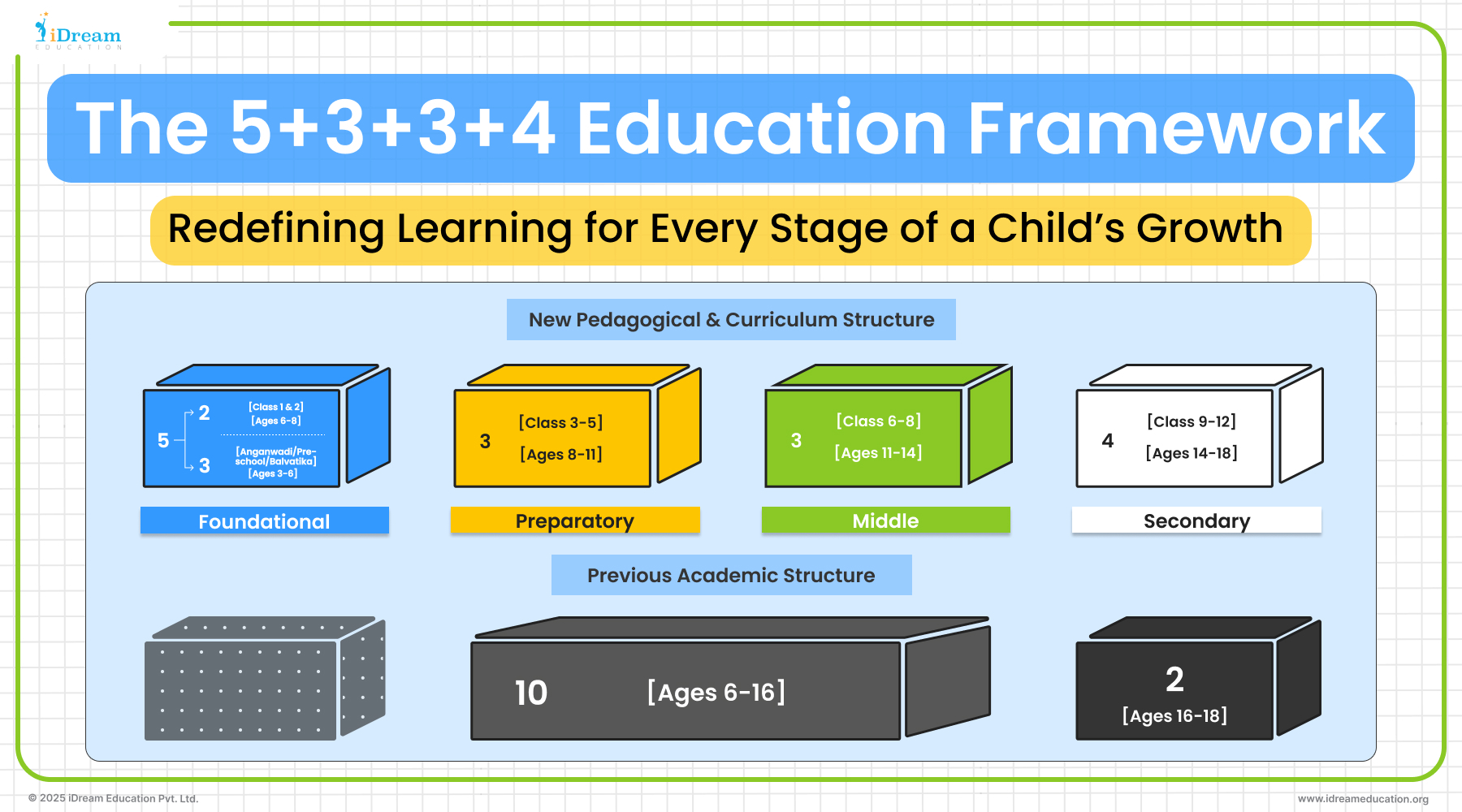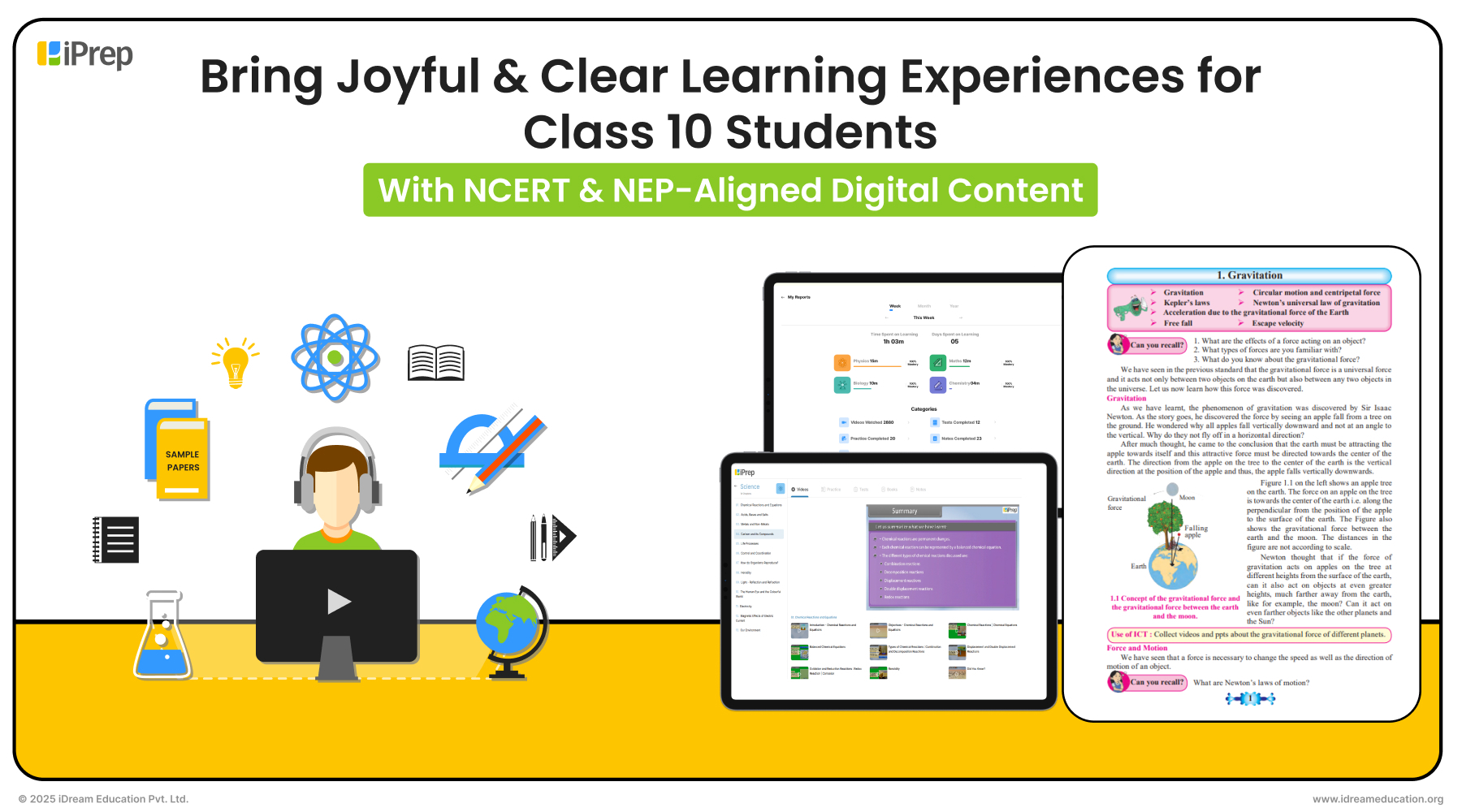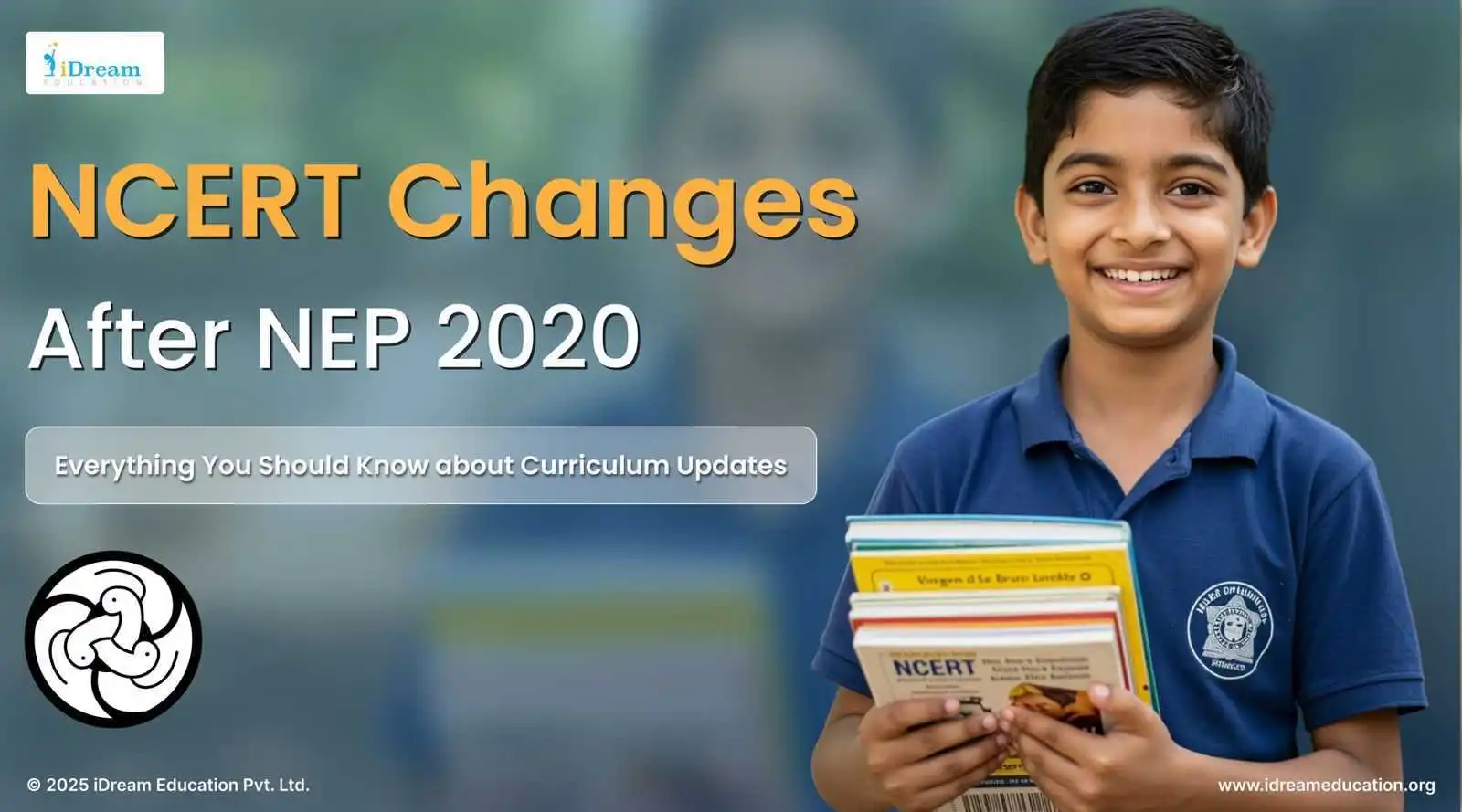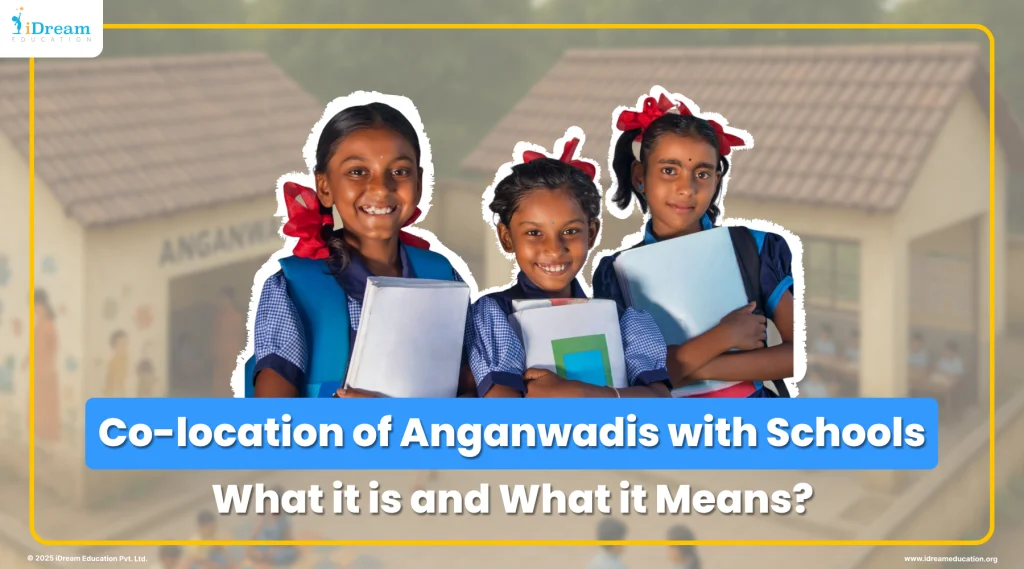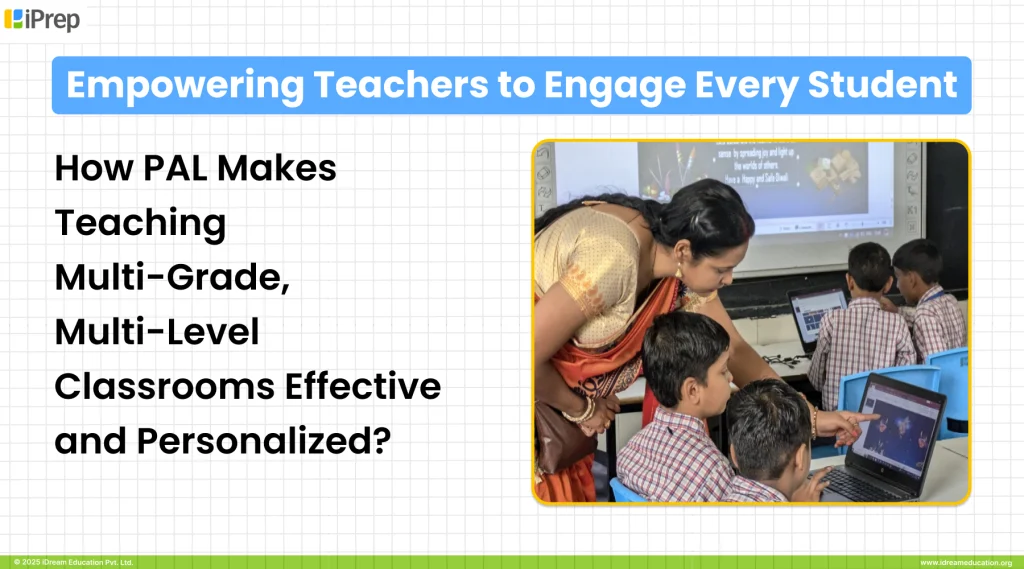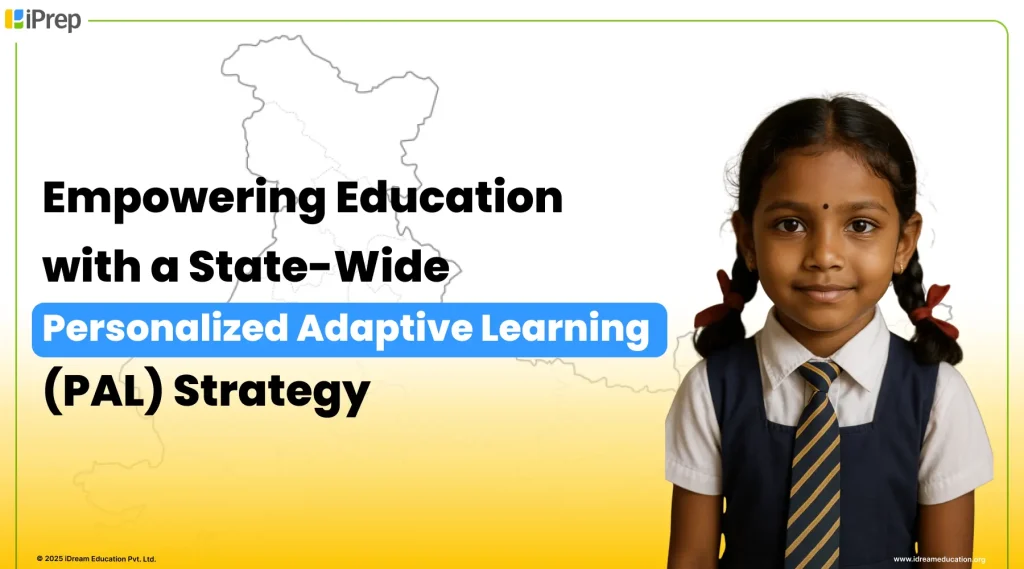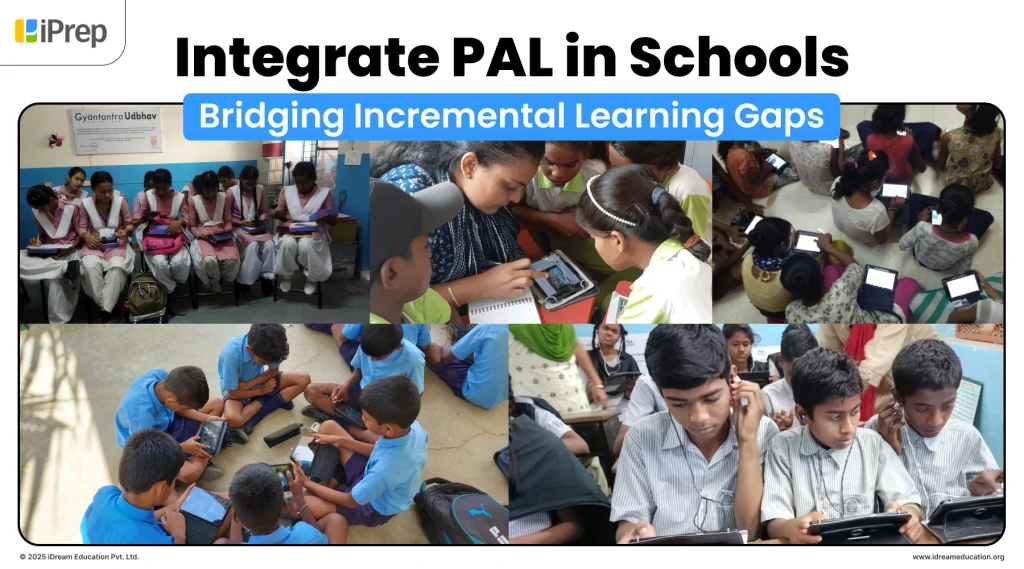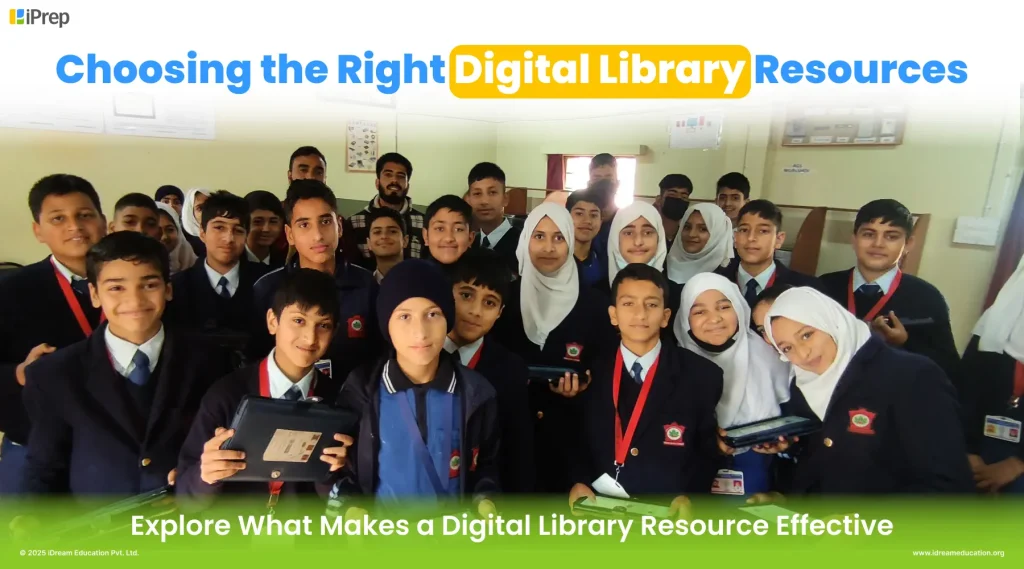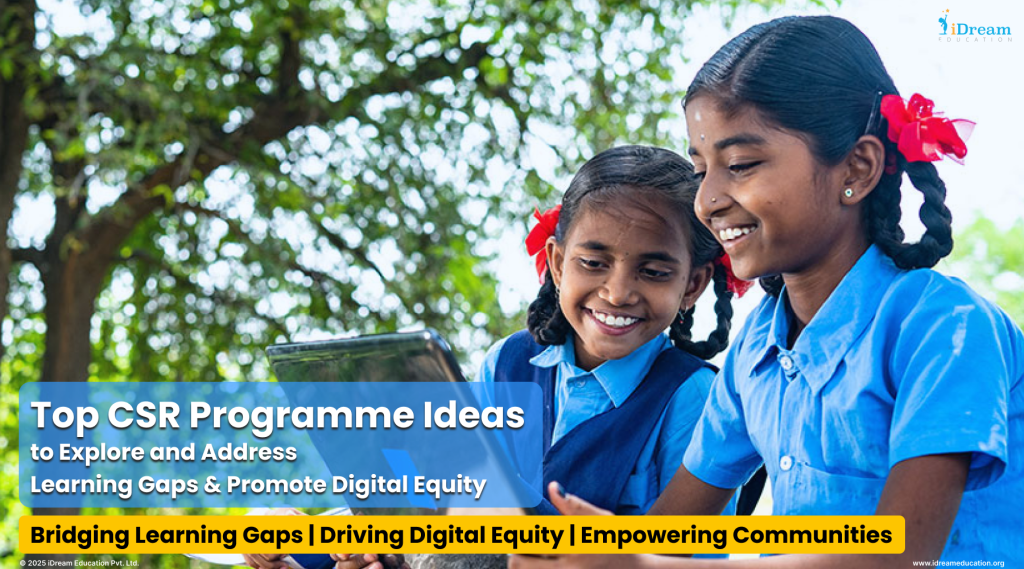
India’s K12 education system is in the middle of a transformation—one that’s as complex as it is promising. For those building in the edtech space, the question isn’t whether there’s opportunity, but how to tackle it smartly. With the market projected to reach USD 256.03 billion by 2033, there’s a need to scale content quickly and efficiently. That’s where K12 content licenses have emerged as a key enabler.
For many platforms, licensing now drives significant revenue. It allows them to tap into new segments without recreating core learning materials, while still aligning to diverse curricula, regional languages, and evolving tech infrastructure.
This guide aims to walk through what’s working in K12 content licenses, what’s changing, and what to watch for — especially if your platform is looking to grow through smart partnerships, not endless content production.
Why K12 Content Licensing Is Gaining Ground
Several changes have converged to make licensing not only viable but vital.
First, there’s policy. The NEP 2020, along with the expected developments in NEP 2025, triggered a wave of digital adoption, especially in public education. Then there’s accessibility — mobile-first internet and affordable data (₹22 per GB) have made digital learning available to families and schools far beyond the metro cities.
On the investment front, the education budget — now above ₹1.04 lakh crore — is shifting toward infrastructure, ICT labs, and device-based learning environments. These initiatives need high-quality content, and they need it at scale.
Finally, there’s market readiness. Between FY21 and FY24, the number of B2B edtech platforms in India grew by more than 50%. This is no longer a fringe model. K12 content license is fast becoming the backbone of how edtech companies reach classrooms and stay relevant.
K12 Content Licensing: 3 Important Models
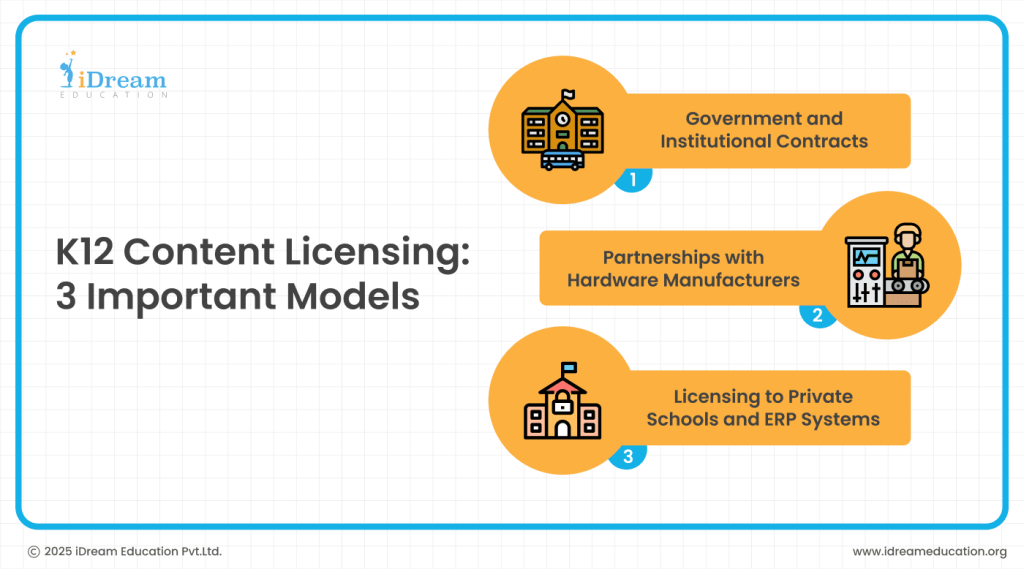
Let’s examine how K12 content licenses are being implemented in practice, using three distinct but often overlapping models.
1. Government and Institutional Contracts
State education departments remain the biggest customers in India’s K12 content integration landscape. Their needs are massive, and their standards are strict. But if you meet both, the returns are long-term.
Most government deals are structured around either per-student or per-device pricing, with institutional packages for ICT labs and adoption of smart classroom solutions becoming more common.
The real differentiator, however, is implementation. Platforms must demonstrate how the content will lead to measurable outcomes and how those outcomes will be reported. In this space, strong project management is as important as good pedagogy.
2. Partnerships with Hardware Manufacturers
This model has gained traction quickly, and for good reason. Educational tablets, smart TVs for Classrooms, and digital boards for schools are increasingly used in both public and private schools. Pre-loading licensed content onto these devices adds value for users and streamlines platform distribution.
In school environments, the quality of educational content plays a major role in how valuable a device is perceived by both teachers and students. NCERT digital content often makes the difference in classroom adoption. Licensing revenue is often shared, with ratios favouring the hardware partner, but the scale of deployment can more than make up for that.
The key to success? Interoperability. Content needs to function across platforms — Android, Windows, even offline — while maintaining user experience. For example, leading K12 NCERT content providers like iDream Education have leaned into this, building a platform-agnostic model that scales without sacrificing flexibility.
Learn More: Why IFPDs and Smart TVs in Government Schools must be preloaded with Offline Digital Content and LMS?
3. Licensing to Private Schools and ERP Systems
Private schools, especially those juggling multiple board requirements, look for digital libraries that fit seamlessly into their teaching workflows. Increasingly, they want content that aligns with CBSE or state board standards and integrates with their ERP or LMS for schools.
These schools often seek analytics and engagement tools bundled into the content platform. And well-funded schools are willing to pay a premium. Here, it isn’t just about what’s being taught. It’s about helping educators understand how well it’s being absorbed and where intervention is needed.
The Legal Layer in K12 Content Licensing: What Needs to Be in Place
If licensing is your distribution strategy, then compliance is your defence strategy.
India’s Digital Personal Data Protection Act requires any platform handling student data to get informed consent, usually through a parent or guardian, and to store and manage that data responsibly. If you’re licensing content that touches student data (e.g., for adaptive learning), those rules apply to you too.
Meanwhile, the Digital India Act is pushing for more transparency and content accountability. If your platform recommends or delivers content algorithmically, you may be expected to show how that process works and ensure that licensed materials meet content safety standards.
Don’t overlook copyright either. Whether you’re sourcing from NCERT, private creators, or open libraries, usage rights, territories, and modification permissions all need to be crystal clear.
Overlapping IP is one of the most common pitfalls in educational content, and it’s usually preventable.
The Financial Aspects: Making K12 Content Licensing Work
So, how do you structure a pricing strategy that makes licensing profitable, without pricing yourself out of the market?
Many platforms start with annual per-student pricing, typically ranging from ₹200 to ₹500. Larger deployments — say, 10,000+ students — often qualify for discounts, but these need to be offset with service-level agreements that manage expectations and support costs.
Bundled pricing with hardware allows for higher-value licensing deals. A tablet with quality pre-loaded content might justify a ₹5,000 price point. Integrated IFP solutions can go even higher, depending on content depth and feature set.
Government contracts typically involve phased payments: part upfront, part on deployment, and a final tranche upon demonstrating learning impact. This structure rewards not just delivery, but documentation.
K12 Content Licensing: The Tech That Holds It All Together
You can’t talk about K12 content licensing without talking about delivery — and that’s where infrastructure matters.
Your content must perform equally well across platforms — Android, iOS, Windows, Linux — and in both connected and offline environments. Rural deployments, in particular, still depend on offline-first strategies.
Behind the scenes, a strong CMS is non-negotiable. It needs to handle version control, manage usage logs, support partner integrations, and push real-time updates across hundreds or thousands of devices.
Many licensing deals live or die based on this functionality, even more than the content itself.
Takeaway
What’s clear is this: K12 content licences are no longer a stopgap or workaround. They are becoming core to how edtech companies expand — and how learning happens in a complex, multi-lingual, device-diverse country like India.
For content creators, the challenge is to build for adaptability. That means modular, well-tagged digital libraries — ideally localised across multiple languages. For platforms, the work is orchestration: aligning multiple content streams into a coherent learner experience, while managing compliance and technical quality along the way.
It’s not simple. But done right, K12 content licenses can become one of your most resilient growth channels — one that creates real value for learners, educators, and partners alike.
iDream Education empowers universal access to learning through partnerships across government, private, and hardware sectors. Our approach enables students and teachers to achieve desired learning outcomes while ensuring last-mile reach across India’s diverse educational landscape.
With content aligned to over 28 state boards, a bilingual learning app, and setup for smart classrooms, learning tablets, and iPrep PAL, iDream combines subject matter depth with market execution. Ready to explore how K12 content licensing can enable universal access for your platform?
Connect with us to discuss partnership opportunities that deliver measurable learning outcomes.
To learn more, you may contact us at +91 7678265039.
You can also share your details here or write to us share@idreameducation.org.


